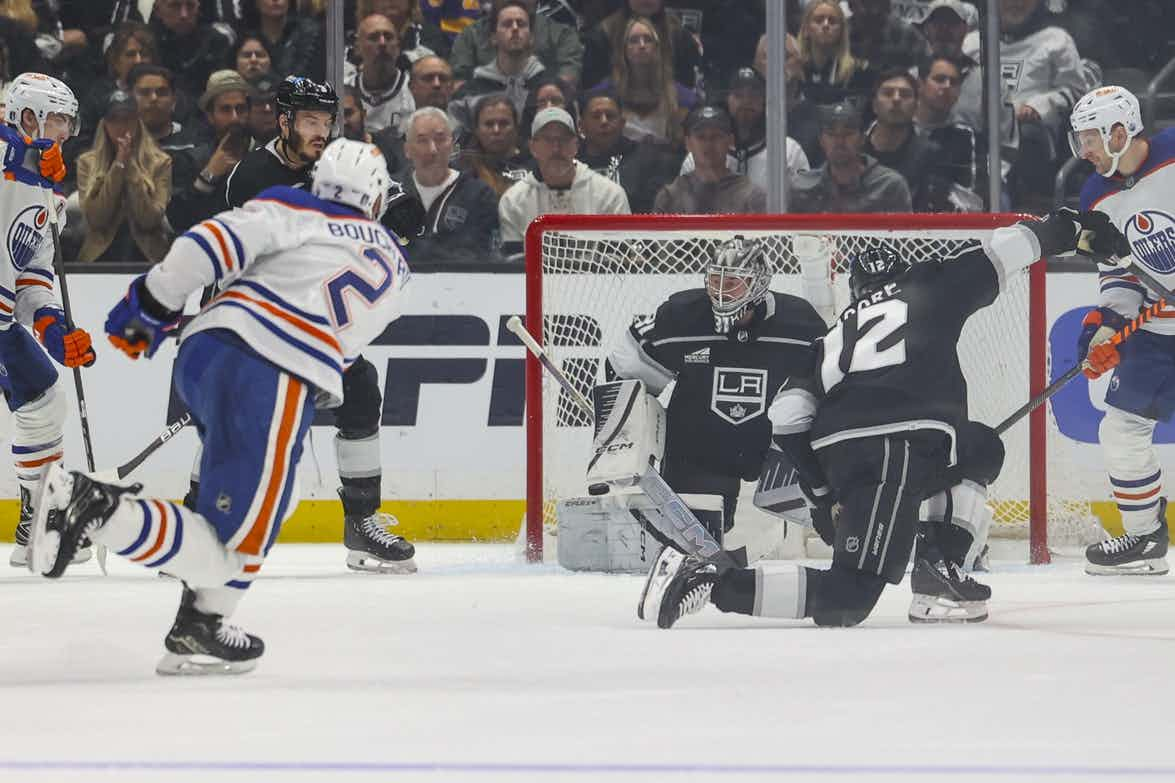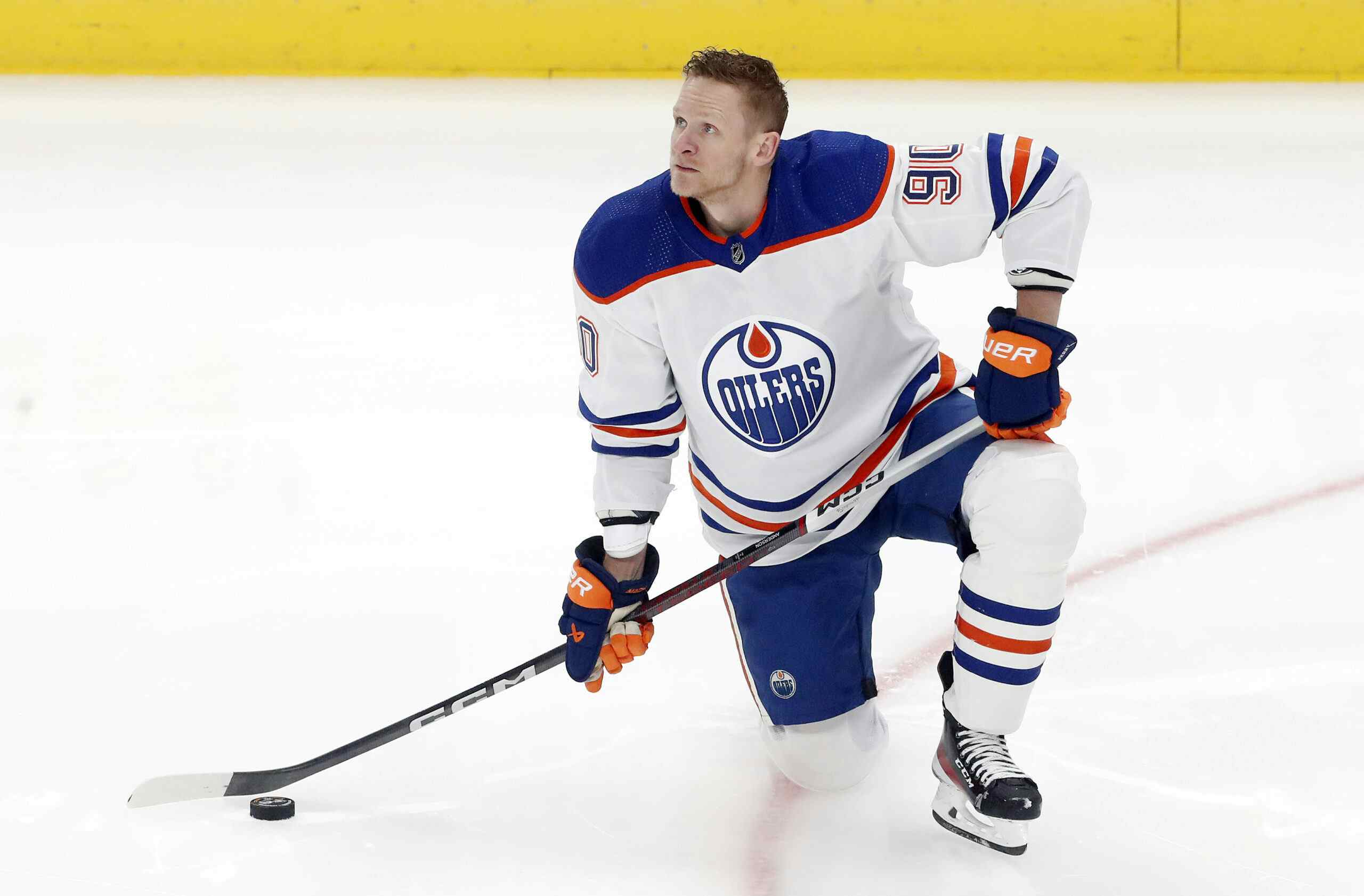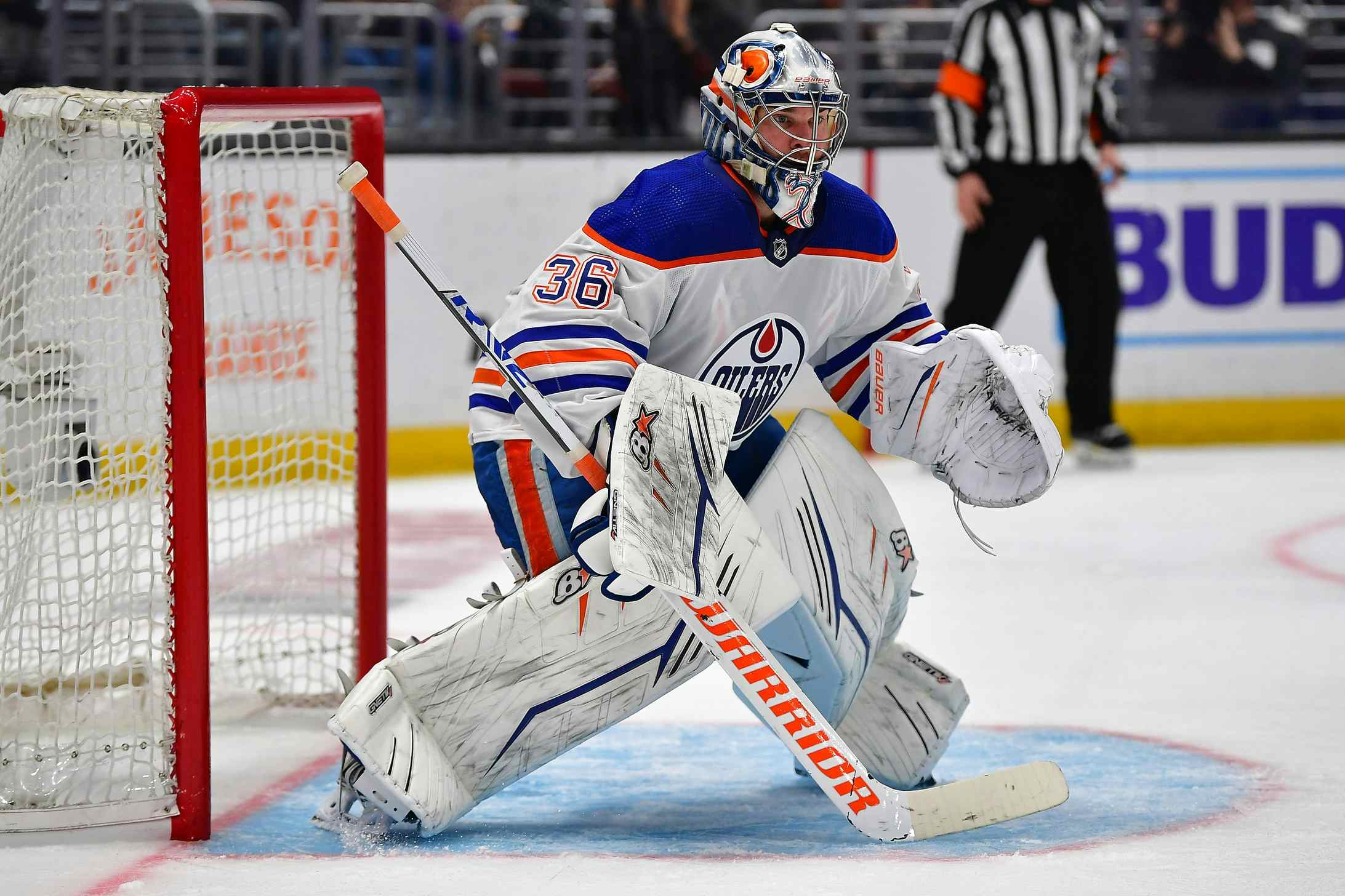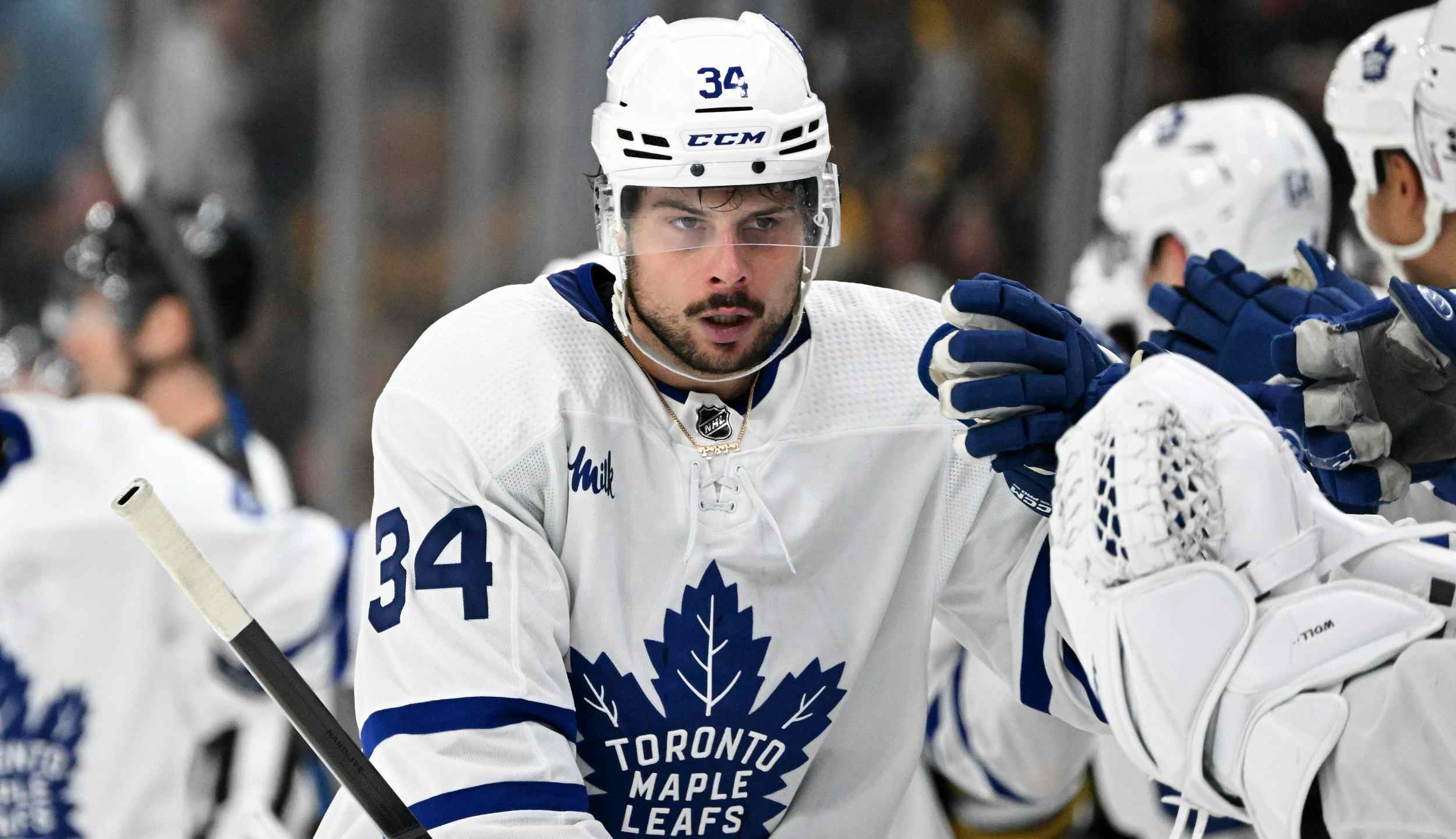Skills coaches the new wave in NHL
By Jason Gregor
7 years ago
We have watched the goalie position evolve substantially in the past two decades. The change from stand up to butterfly has made them better, but much of their improvement comes from having a goalie coach. Every NHL team has one, many have two, and the goalies are privy to a lot of one-on-one coaching. It has helped goalies immensely, yet NHL teams haven’t put the same resources into skill coaches for skaters.
Every team has a skills coach, but the one-on-one teaching is a fraction of what the goalies receive, and I believe the disparity in coaching, combined with the focus on systems over skill, is why the NHL isn’t as exciting as it used to be.
The good news, however, is we are finally starting to see more of a focus on skill coaches for skaters.
Hall of Famer Adam Oates has become one of the most sought-after skill development coaches among NHL players. Some of the league’s best scorers — Alex Ovechkin, Steven Stamkos, Max Pacioretty — work with him and he’s adding new players every week. He doesn’t only work with elite goal scorers. He works with Teddy Purcell, Matt Hendricks, Mark Schiefele and many others.
He and the players sign a contract stating they will not discuss their NHL team’s system. Oates was an NHL coach and he is aware of how an outside voice on systems would negatively impact a coach. They work specifically on having the right stick, shooting, passing and puck retrieval techniques, and other skill plays that can benefit whatever system their NHL head coach wants to use.
Oates’ stable of players has expanded beyond regular NHLers. He works with recent draft picks and he’s done some coaching clinics with minor hockey teams as well. Recently, journeyman NHLer Mark Fraser signed up to work with Oates.
Fraser turns 30 in September. He has played 219 NHL games and 386 AHL games. He signed a one-year, two-way deal with the Oilers earlier this month. With a left-shot depth chart of Oscar Klefbom, Andrej Sekera, Brandon Davidson, Darnell Nurse and Griffin Reinhart in front of him, Fraser knows he will likely start the season in the AHL.
He is also fully aware if he wants to play in the NHL again he’ll need to improve his skills. Fraser is a big, strong, defensive defenceman, but if you want to play defence in today’s NHL, you have to be able to move the puck regardless of size and toughness.
And that’s why Fraser hired Oates.
“
It’s been phenomenal working with
Oatesy. I think any player who has an opportunity to talk to him for probably
no more than ten minutes later, will agree that he’s the smartest guy in
hockey that we’ve spoken to. He’s just so interesting and intelligent in
how he can see and read the game and what adjustments to make on the
individual,” said Frasier.
“We went over some film ofOatesy. I think any player who has an opportunity to talk to him for probably
no more than ten minutes later, will agree that he’s the smartest guy in
hockey that we’ve spoken to. He’s just so interesting and intelligent in
how he can see and read the game and what adjustments to make on the
individual,” said Frasier.
mine. He obviously knows this isn’t an issue of physicality and I’m a guy who
can skate fine, that’s not even the issue. It’s just a matter of cleaning
things up, bringing a sexiness to the game. There are plays that I think
everyone experiences on the ice where a puck might bobble or something of that
nature, a little panic situation, but depending on who you are, your comfort in
the situation can look a little less smooth, a little more ugly perhaps than
some other cases. And that’s what I need to improve.
“He’s really just trying to teach me that
composure and control and posture and footwork and it all relates to the tools that he puts in my hands. He’s a big stick guy. It’s (stick length and lie) a matter of keeping me erect as a
player or saving me inches on the ice where I might have to run into the boards
to make a play. This way I can complete the play without having to exhaust myself
as much as I may have in the past,” said Fraser.
composure and control and posture and footwork and it all relates to the tools that he puts in my hands. He’s a big stick guy. It’s (stick length and lie) a matter of keeping me erect as a
player or saving me inches on the ice where I might have to run into the boards
to make a play. This way I can complete the play without having to exhaust myself
as much as I may have in the past,” said Fraser.
“It doesn’t matter what my age is, I’ve always wanted to continue working and to
improve my game. Thankfully with Oatesy it was something that whether or not I get
better [laughs] he’s such an amazing person to be with and he’s filled me with
so much confidence that alone is paying off,” explained Fraser.
improve my game. Thankfully with Oatesy it was something that whether or not I get
better [laughs] he’s such an amazing person to be with and he’s filled me with
so much confidence that alone is paying off,” explained Fraser.
Confidence is a huge part of the game for any player, but when a superstar loses it he has a long way to fall before he’s at the end of the bench. Fringe players lose confidence and they are very likely to lose their spot on the roster. It is the harsh reality of the NHL.
Having had a few sessions with Oates, I asked Fraser how much more confidence he has now handling the puck compared to previous off seasons.
“A lot more, but there is still a
long ways to go and it’s a lot different when it’s just he and I on the ice as
opposed to a game situation. How I truly feel, I may not really start noticing
some of these differences until I just suddenly do something in the game. It may be only me noticing the changes and what I chose to do in this play as
opposed to the old Mark Fraser. It may be some things that maybe no one else
can even pick up on, but I think over time it’s something that will help to
change my game. But I can definitely say I’ve noticed a difference in the day-to-day drills.
long ways to go and it’s a lot different when it’s just he and I on the ice as
opposed to a game situation. How I truly feel, I may not really start noticing
some of these differences until I just suddenly do something in the game. It may be only me noticing the changes and what I chose to do in this play as
opposed to the old Mark Fraser. It may be some things that maybe no one else
can even pick up on, but I think over time it’s something that will help to
change my game. But I can definitely say I’ve noticed a difference in the day-to-day drills.
“It’s a matter of just training your brain and
your muscles to remember what it’s like to be in this situation, how to be
controlled and composed and confident. [Laughs] I’m still a little panicky
perhaps which again, is something that everyone is going to deal with, but I
know his main goal for me is our sessions together will translate into me looking
a lot cleaner in some plays,” Fraser explained.
your muscles to remember what it’s like to be in this situation, how to be
controlled and composed and confident. [Laughs] I’m still a little panicky
perhaps which again, is something that everyone is going to deal with, but I
know his main goal for me is our sessions together will translate into me looking
a lot cleaner in some plays,” Fraser explained.
Oates has said many times when he appears as a guest on my radio show he believes the hardest play in hockey is when a D-man has to turn and retrieve a dump in with a forward in hot pursuit. It’s a play many of us take for granted, but ever since Oates mentioned it I’ve paid close attention and it’s amazing to watch how Drew Doughty, Duncan Keith and other top defenders make it look so routine. The puck can be bouncing all over, but they rarely mishandle it.
Fraser struggled with those plays. He needs to be more smooth in that situation, and to correct it Oates got him to change his stick and they have focused on dump in scenarios often in their training.
“The dumps are never really the same as far as how much
time you have or where a guy is. But you’re trying to turn around, pivot, go a
direction with someone right on you that’s probably trying to put you through
the third and fourth row if he could [laughs], and grab that puck as it’s stuck
on the dasher and turn the other direction and make a play. All while under
pressure. It’s incredibly hard to do and I’m grateful that he sees the
difficulty in it for someone who never played the position.
time you have or where a guy is. But you’re trying to turn around, pivot, go a
direction with someone right on you that’s probably trying to put you through
the third and fourth row if he could [laughs], and grab that puck as it’s stuck
on the dasher and turn the other direction and make a play. All while under
pressure. It’s incredibly hard to do and I’m grateful that he sees the
difficulty in it for someone who never played the position.
that most comfortable spot on your blade. So we do drills where I’m
going back, with only a bit of pressure on me, the quicker it’s in that pocket, the quicker I can turn, or the quicker
my feet are headed back up the ice and all of the sudden things just fast
forward as far as the time it took me to be in these positions and nothing about my skating has
really changed.
“I didn’t all of a sudden become this player through skating
techniques or anything. It’s just a matter of being able to approach this tough
play with perhaps a better stance, a better position, a more protected position
all because I’m now using, at least now that it’s mine, a tool that is enabling
me to do so and the result is a quick turn, or an escape or wheeling the net.
Sometimes we just do drills and I just grab [the puck] and I rip it out off of
the glass but everything is a little more fluid because I’m able to just use a
better tool,” explained Fraser.
techniques or anything. It’s just a matter of being able to approach this tough
play with perhaps a better stance, a better position, a more protected position
all because I’m now using, at least now that it’s mine, a tool that is enabling
me to do so and the result is a quick turn, or an escape or wheeling the net.
Sometimes we just do drills and I just grab [the puck] and I rip it out off of
the glass but everything is a little more fluid because I’m able to just use a
better tool,” explained Fraser.
Think about the comparison to golf and hockey. Many recreational
golfers, and all the pros, have had a proper club fitting. Some
fittings will take hours to get the right loft, angle, stiffness and
length.
golfers, and all the pros, have had a proper club fitting. Some
fittings will take hours to get the right loft, angle, stiffness and
length.
How many of us have had the same fitting with a hockey stick?
You
can be the best skater in the world, but if you can’t make plays with
your stick it won’t matter. It’s perplexing why we focus more on skates and
speed than we do on getting the properly fitted stick. It has been an overlooked aspect of the game, especially in minor hockey, and with more people focusing on it, young players reap the rewards.
can be the best skater in the world, but if you can’t make plays with
your stick it won’t matter. It’s perplexing why we focus more on skates and
speed than we do on getting the properly fitted stick. It has been an overlooked aspect of the game, especially in minor hockey, and with more people focusing on it, young players reap the rewards.
I’d be willing to bet some kids would play the game longer if they had more confidence handling the puck.
During our conversation you could hear the excitement in Fraser’s voice. He feels more comfortable handling the puck. He has no illusions he will suddenly be a star player, but making the play quicker, faster and more fluidly will get him out of trouble more often.
It is odd we haven’t seen this type of intense skill-development focus before for NHL players. While goalies have been getting excellent coaching, it seems the NHL has focused more on system play for their players over specific skill development.
There is a constant push for faster and stronger, and obviously there is loads of skill in today’s game, but I believe we have seen a much larger advancement in the goaltending position than we have among forwards or defence.
Why is that I asked Fraser?
“To be honest, at least what Adam
Oates is able to do with myself and some of the other players versus not every
having that before in my career, I really just think it’s a
testament to him, not so much discrediting anyone else that I’ve ever passed on
the way, the coach or the mentor or anything like that. He has thirty years of
NHL experience. Something like thirteen hundred games, and over a thousand
points and he loves analyzing plays and why this would happen when he was a
player, and I didn’t connect with that guy on that pass, what could I
potentially do differently so that next time we do connect?
Oates is able to do with myself and some of the other players versus not every
having that before in my career, I really just think it’s a
testament to him, not so much discrediting anyone else that I’ve ever passed on
the way, the coach or the mentor or anything like that. He has thirty years of
NHL experience. Something like thirteen hundred games, and over a thousand
points and he loves analyzing plays and why this would happen when he was a
player, and I didn’t connect with that guy on that pass, what could I
potentially do differently so that next time we do connect?
“I think it’s his ability to explain it to us,
whether it’s a dump retrieval or proper one timer setting, or just a neutral
zone transition. He’s able to watch video and see things differently than you
or I are. He’s always been an intelligent person and I think that he was a
student, not so much of the game, but also of the situations and it’s really
quite captivating to listen to his reasoning of why this will work and why it won’t.
And it makes perfect sense as a player once you hear it,” said Fraser
whether it’s a dump retrieval or proper one timer setting, or just a neutral
zone transition. He’s able to watch video and see things differently than you
or I are. He’s always been an intelligent person and I think that he was a
student, not so much of the game, but also of the situations and it’s really
quite captivating to listen to his reasoning of why this will work and why it won’t.
And it makes perfect sense as a player once you hear it,” said Fraser
Fraser has a new found confidence and he is looking forward to using his new skills in games and seeing how he progresses.

Why was Edmonton the right fit I asked?
“After talking to a few teams thatwere interested I sensed both sides felt it would be a good
opportunity. There’s obviously a familiar factor of having been there
before, a lot of different faces, but a lot of the same as well.
“I was quite thrilled and optimistic about their excitement to have me
back and what this could potentially mean for myself and for the organization
moving forward. I think they are a team that is trending in the right
direction and everyone hopes there are some fantastic days ahead.I would just like to be a part of that in any kind of contributing way. I think it’s where I am in my career, it’s nice to go to a familiar setting, but I feel I have something to
prove from the last time I was wearing the Oilers jersey.
back and what this could potentially mean for myself and for the organization
moving forward. I think they are a team that is trending in the right
direction and everyone hopes there are some fantastic days ahead.I would just like to be a part of that in any kind of contributing way. I think it’s where I am in my career, it’s nice to go to a familiar setting, but I feel I have something to
prove from the last time I was wearing the Oilers jersey.
When I asked Peter Chiarelli about signing Fraser he said, “We don’t have someone like him in the minors. We need a big, strong guy who can help with our skilled defenders and I believe Mark could help us in Edmonton at times as well.”
Fraser will come to camp and not worry about the depth chart. He is focused on improving his skills and believes his time with Oates will make him a better player in many different ways, especially handling the puck in the defensive zone.
“A lot of that at times is a
confidence issue, you have the ability to get to places and get to places
quickly, but how fast and confidently and smoothly can you complete that
play is the issue. A lot of plays for defensemen, some of the nicest breakout plays for a
defenseman can be a no-look, four-foot backhand pass to a centreman and it’s just something that could completely disrupt a team’s forecheck. I didn’t always have the confidence to make that play quickly.
confidence issue, you have the ability to get to places and get to places
quickly, but how fast and confidently and smoothly can you complete that
play is the issue. A lot of plays for defensemen, some of the nicest breakout plays for a
defenseman can be a no-look, four-foot backhand pass to a centreman and it’s just something that could completely disrupt a team’s forecheck. I didn’t always have the confidence to make that play quickly.
“For me it’s just learning to use and work with a new tool and just being
relentless about it. Wanting to keep getting better, wanting to keep putting in
that time in the summer and knowing that it just doesn’t stop whether it’s a
position with Edmonton or as you mentioned Bakersfield, just to continue to
work on things, to grow to get better.
relentless about it. Wanting to keep getting better, wanting to keep putting in
that time in the summer and knowing that it just doesn’t stop whether it’s a
position with Edmonton or as you mentioned Bakersfield, just to continue to
work on things, to grow to get better.
“I believe everyone should be doing
that in hockey or in life, but I’ve definitely reached a point now where I’ve never
stopped working. This is just a new realization and drive to work
on a completely new part of my game that I have never really had anyone around
to teach me to be honest,” Fraser said.
that in hockey or in life, but I’ve definitely reached a point now where I’ve never
stopped working. This is just a new realization and drive to work
on a completely new part of my game that I have never really had anyone around
to teach me to be honest,” Fraser said.
PARTING SHOT

Fraser played with Adam Larsson in New Jersey in 2014/2015 and I asked him for a quick scouting report.
“Larsson is a
very smooth defender in the sense of his breakout or outlet passes. He’s not an
overly large guy, but he’s not afraid to be physical in an intelligent way and
in a proper body positioning way. He has a great work ethic and he’s an overall intelligent, smooth, very complementary defenseman.”
very smooth defender in the sense of his breakout or outlet passes. He’s not an
overly large guy, but he’s not afraid to be physical in an intelligent way and
in a proper body positioning way. He has a great work ethic and he’s an overall intelligent, smooth, very complementary defenseman.”
Recently by Jason Gregor:
Recent articles from Jason Gregor





